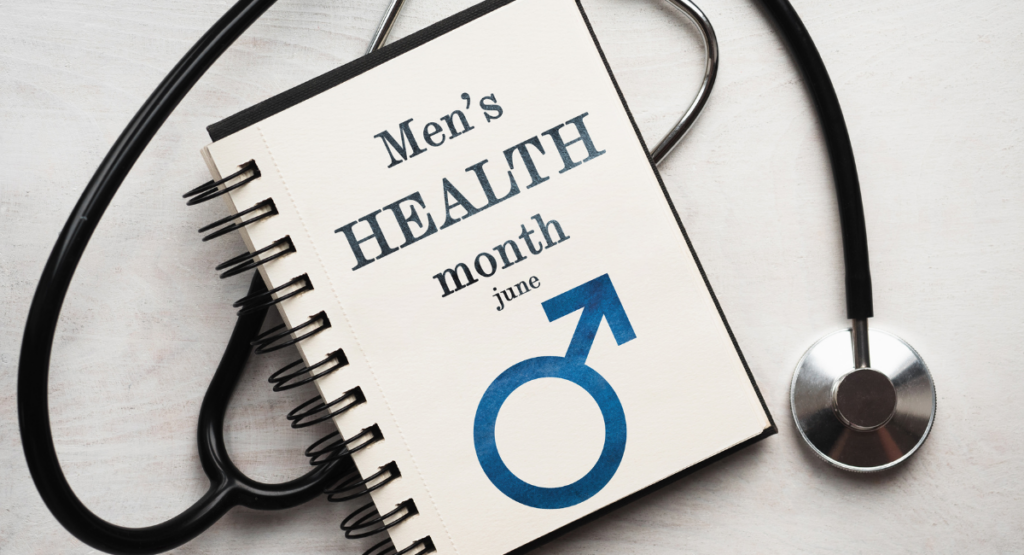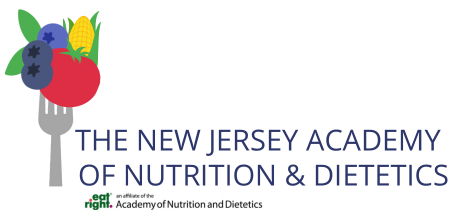June is National Men’s Health Month! This month focuses on bringing awareness and attention to preventable health problems or improve current conditions. 3 Key factors that may help prevent, protect and reduce risk of chronic diseases are nutrition, physical activity and stress management. Good nutrition and lifestyle play big roles in keeping men healthy so let’s talk more about these factors.

Key Factor 1: Men’s Nutrition
First stop, Bone Health! Strong bones are just as important for men as women. Your body needs calcium, vitamin D, other important nutrients and regular weight-bearing physical activity to make and keep bones strong and hard. Not getting enough calcium during childhood can lead to osteoporosis later in life, a disease in which bones become weak and easily fracture or break.
Adults usually reach peak bone mass by the age of 30. Choosing foods first to meet nutrient needs is recommended, but in some cases a multivitamin mineral supplement may be needed. Learn more about the essential ways to ensure healthy bones for life.
Healthy Bones and Calcium
Males who are between 19 and 70 years old should get 1,000 milligrams of calcium a day. After age 70, calcium needs jump to 1,200 milligrams a day.
Good sources of calcium include low-fat and fat-free dairy products such as milk, yogurt and cheese. Sardines, tofu made with calcium sulfate and calcium-fortified beverages such as soymilk and 100% fruit juice are also good sources. Leafy greens such as collards and kale and fortified ready-to-eat cereals can also provide variable amounts of calcium. In order to get the recommended amount, men need at least three servings of calcium-rich foods or beverages every day. A calcium-rich serving is equivalent to:
- 1 cup low-fat or fat-free milk
- 1 cup low-fat or fat-free yogurt
- 1½ ounces low-fat or fat-free cheese
- 1 cup calcium-fortified soymilk
- 1 cup calcium-fortified 100% fruit juice
- 3 ounces canned sardines, with bones
The Role of Vitamin D
Vitamin D is a key nutrient that helps bones absorb calcium, so it’s important to meet daily vitamin D needs based on age. Per day, infants need approximately 400 IU of vitamin D; children 1 to 18 years old need 600 IU of vitamin D; men under 70 need 600 IU of vitamin D; and men older than 70 need 800 IU of vitamin D.
There are three ways to get vitamin D: sunlight, food and supplements. Vitamin D is found naturally in just a few foods such as fatty fish including mackerel, salmon and tuna; egg yolks; and mushrooms grown under UV light. Milk typically is fortified with vitamin D and fortified non-dairy beverages and some brands of orange juice and cereal also are sources of vitamin D. Men who do not get enough vitamin D from foods should talk to their physician about the need to take a vitamin D supplement.
Fruits and Vegetables Please!
Now let’s talk about increasing fiber intake with fruits and vegetables! Focus on eating more plant-based foods, such as vegetables and legumes, and fewer meats high in saturated fat. Not only are fruits and vegetables low in calories and a source of dietary fiber and antioxidants, they also can help keep blood pressure in check. High blood pressure is a major risk factor for heart attack and stroke. What makes fruits and veggies so good? They provide a variety of nutrients, like potassium, a mineral that has been shown to lower blood pressure in clinical studies.
The recommended amount of potassium for adult men is 3,400 milligrams per day. Choose foods first as a source of potassium and always check with your health care provider before taking any supplements. Include at least 2 cups of fruit and 2 ½ cups of vegetables daily to help with your potassium intake. Great picks to help you reach this goal include tomatoes, spinach, potatoes, bananas, squash and beans.
Heart Healthy Fat
The amount and type of fat you eat makes a difference. Replacing sources of saturated fats with unsaturated fats has been shown to be beneficial for overall cardiovascular health. Olive oil, canola oil, avocados, walnuts and almonds contain unsaturated fat. Research has found that saturated fat may have negative effects on heart health. Foods such as bacon, red meat, butter and ice cream contain saturated fat, so best to limit these foods.
Omega-3 fatty-acids, also a type of unsaturated fat, have been found to be helpful in preventing sudden death from heart attacks. Fatty fish, such as salmon, mackerel, tuna and herring, contain two types of omega-3 fatty acids, docosahexaenoic acid (DHA) and eicosapentaenoic acid (EPA).
Another type of omega-3 fat, alpha-linolenic acid (ALA) may also provide cardiac benefits. Flaxseeds and walnuts contain ALA. Include 2 tablespoons of ground flaxseed or 1 ounce (about a small handful) of walnuts on a regular basis to increase your ALA intake.
Key Factor 2: Physical Activity
Aim for physical activity most days of the week, with a goal of at least 2 hours and 30 minutes of moderate-intensity, aerobic activity throughout the week. Simple activities make a difference. This includes walking, jogging, biking and dancing. Participate in strength training, such as lifting weights, working with resistance bands, and some types of yoga, at least two times per week. Remember to incorporate balance and flexibility exercises, too. Routine physical activity is cardiovascular protective and helps maintain bone health as well as strengthen them
Key Factor 3: Prioritize Stress Management
Even if you eat right and exercise regularly, poorly managed stress can wreak havoc on your health. Getting enough sleep, practicing relaxation techniques and nurturing relationships are healthy habits that can help protect you from the harmful effects of stress.
Start small and pick one thing to work on one thing to implement. Maybe it’s to add an extra day of physical activity, or to incorporate some deep breathing or meditation to help reduce stress. Maybe it’s to add an extra vegetable into your daily eating routine. Just one small change can start to make a difference.
Contributors: Esther Ellis, MS, RDN, LDN, Sarah Klemm, RDN, CD, LDN, from eatright.org
Marissa Perrotta, RDN,RYT



